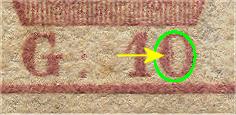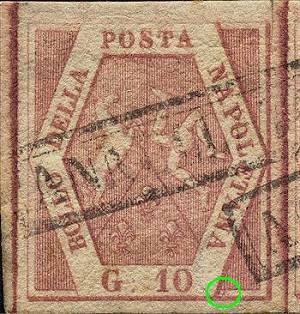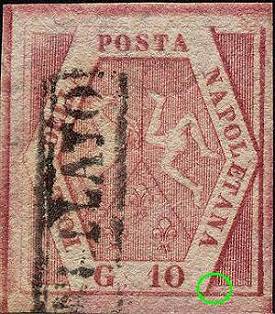10 GRANA
To print this value two plates
have been used, one prepared by Masini and the second one by De Masa; the
stamps made with the second plate appeared from beginning August 1859. Some
details allow for the identification of the proper plate. Other minor details
allow in addition for the identification of the group (right or left) from
which the samples are coming. This last point, quite technical, will not be
dealt here in detail: in the "Bibliography" section some
suggested work is listed for the people who desires to continue the study.
To be noticed how in both plates, inside the "0" of "10"
is noticeable a small vertical trait on the left of the "0" itself,
probably an engraving defect, always present (Fig. 1).

Fig. 1:
the small engraving defect always presents

